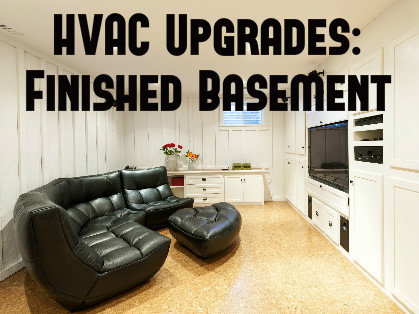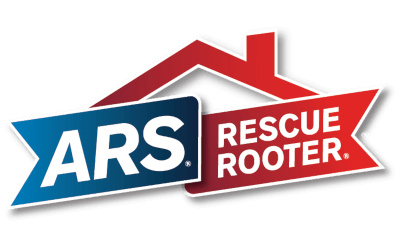HVAC Options to Consider When Finishing Your Basement

Finishing your basement is a great way to expand your living space. Maybe you’re planning that perfect spot to watch the big game, or making a play space for the kids, but no matter the reason for the investment in your home, it’s a solid investment.
But in all of those conversations about where the air hockey table could go, how much living space and storage space you’ll want, and whether or not to add a bathroom, the one thing that always gets overlooked is heating and cooling your finished basement. Before any framing or drywall start to go up, you need to take a step back and think about how you want your HVAC system to help keep your newly liveable space comfortable throughout the year.
Whether you decide to outsource your basement remodeling to a general contractor or tackle the project going the DIY route, it’s important to consider if your current heating and air conditioning systems can accommodate the additional space, how to incorporate air vents into your floorplan, whether you need to include an air return, and many other factors to address before work on your basement dream begins.
Do Finished Basements Need HVAC?
Finishing a basement is quite a financial investment. It may seem like a simple way to cut renovation costs down, but over time you may add additional costs to the project you neglected. First, it’s important to consider any code restrictions and rules regarding heating and cooling liveable space. Secondly, think about how you are going to use this new space. Climate plays a critical role in humidity and temperature control preserving valuable or collectible items. Additionally, if you plan to turn the finished basement into a playroom for the kids, won’t you want them warm in the winter and cool in the summer? These are questions you’ll have to ask yourself before you start any work.
Determining the Needed HVAC System Size
If you know you’ll want HVAC in your finished basement, the next step is to make sure your existing system will be able to effectively heat and cool the new space?. This is especially important if you're dividing the basement into multiple rooms. Circulating conditioned air through several feet of additional ductwork takes additional power your existing HVAC probably wasn't designed to deliver. A professional HVAC technician can help you evaluate your equipment and the extra demands it will face, based on your basement's proposed layout, duct dimensions, and insulation, as well as your area's climate.
If your HVAC isn't sufficient, will you add a second unit or replace your system? The decision is fairly simple if your equipment is more than fifteen years old, needs frequent repair, or isn't right-sized for your home anyway. Newer, satisfactory equipment may be harder to justify replacing, but you may have to consider it for the sake of space—or, look into alternatives to forced-air heating and cooling, like radiators or underfloor heating. Discuss your options with a pro, so you can make an informed investment.
Keeping HVAC Equipment Accessible
Oftentimes, basements are where you can find major home systems that make homes function the way they do. Furnaces, water heaters, water softeners, gas lines, main water line shutoff, and more can sometimes be found in the basement of your home. You’ll probably want to conceal this equipment from view for obvious aesthetic reasons, typically done by building a utility room into your floorplan. Make sure this room is properly ventilated and accessible according to all local building codes. You’ll need sufficient space for technicians to access and work around these systems. You don’t want to make a utility room too small then you have to take down newly framed walls.
Finished Basement Air Duct Placement
Sounds like a silly question to ask, but determining where your ducts go can impact the comfort of your newly finished basement. In many cases, the headroom you’ll have will hinge on the type and placement of your ductwork. Depending on your system and available space, you may need to consider installing slim ducts, rerouting existing ducts, or drywalling around them.
Depending on the square footage of the area you plan to finish, you may need to consider adding additional return vents. The air inside your home is recirculated by your system, pumping air into the home. A return vent pulls air out of your indoor spaces to deliver back to your HVAC system. If you push more air into a new space, like a basement, air may become stale and not circulate as well. Adding on additional air returns to your existing duct system can help keep comfortable flows of air moving throughout the entire home.
Consider Zoned HVAC for Optimal Comfort
A multi-zoned HVAC system is ideal for multi-story houses. It essentially divides your home into different temperature areas, with each controlled by its own thermostat. Since basements are underground, they naturally stay cooler than the rest of the house. That's great in the summer, but not so comfortable once the winter chill sets in. Depending on the type of HVAC equipment in your home, you may be able to install a multi-zone thermostat or a second thermostat to provide independent control for this area. A ductless mini-split installation may also be a simple solution to provide adequate comfort to your newly designed basement.
Basement Indoor Air Quality
Moisture problems are commonly found in finished and unfinished basements. When planning a belowground living space, it’s important to remember the health of your family. The most common indoor air quality add-on is installing a whole-house dehumidifier. These can pull moisture out of your basement’s air and help prevent mold growth. If you’re adding a bathroom or kitchen space to your basement plans, these should have exhaust fans installed to help expel additional moisture.
Adding HVAC to Your Finished Basement Project
A finished basement can not only add desired square footage to your home, but it can give you additional space to relax and enjoy indoor activities. It’s hard to relax and enjoy the newly remodeled space if no one can use it comfortably. Contact ARS®/Rescue Rooter® and speak to any of our comfort advisors if you are planning to tackle your basement finishing. Get started by finding your nearest location and schedule an appointment online or by phone today.


